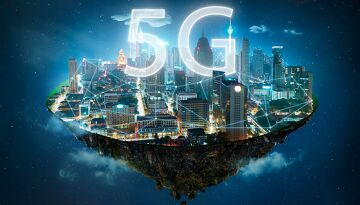 (Note: The following has been submitted as a guest post to CommScope Blogs by Chris Pearson, president of 5G Americas. Opinions and comments provided in this guest post, as with all posts to CommScope Blogs, are that of the author and do not necessarily reflect the views of CommScope.)
(Note: The following has been submitted as a guest post to CommScope Blogs by Chris Pearson, president of 5G Americas. Opinions and comments provided in this guest post, as with all posts to CommScope Blogs, are that of the author and do not necessarily reflect the views of CommScope.)
We are pleased to report that customers are making 5G the fastest growing generation of cellular wireless technology. According to Omdia, there are now over 17.7 million global 5G connections (as of Q4 2019). This impressive number represents 329% growth over Q3 2019 and is five million subscribers ahead of previous projections.
Let’s break this impressive number down by region. By the end of 2019, North America had 587,000 5G connections and 483 million LTE connections. In Q4 2019, North America continued with robust subscription additions of 434.000 5G connections (284% Q3 to Q4) and 13 million LTE connections (2.7% Q3 to Q4) across the region. Latin America and the Caribbean ended 2019 with 1,237 5G subscriptions (314% Q3 to Q4) and 366 million LTE subscriptions (5.4% Q3 to Q4 growth), respectively.
CLICK TO TWEET: 5G Americas’ Chris Pearson highlights the global growth of 5G and the continued adoption of this cellular wireless technology.
So, how does this compare to the first year of adoption for previous technologies like LTE which reached 5.3 billion connections over a ten-year period? Well, when LTE became commercially available in the last quarter of 2009, it was initially used by only 1,000 customers in Western Europe. North America added 20,000 more LTE customers in 2010, bringing the total to 23,250 connections globally. However, it took approximately 10 quarters (until Q1 2012) for 4G LTE to reach 17.9 million connections – roughly where 5G is today. It should also be noted that 3G did not reach this milestone until December 2010 (after 11 quarters), while it took 2G 14 quarters (December 1995).
So, what accounts for the incredibly rapid growth of 5G? We think it has been fueled by the global deployment of 3GPP-standard commercial 5G networks. In fact, there are now 59 5G commercial networks, a number which is expected to nearly quadruple to 200 by the end of 2020. Looking forward, Omdia projects 5G connections will reach 91 million globally by the end of 2020, of which North America will account for 13.9 million. Latin America and the Caribbean will account for an additional 1.5 million subscribers by the end of the year. At the same time, global 4G LTE connections are expected to reach 5.9 billion, of which 513 million (6.1% annual growth) will originate in North America and 397 million (8.6% annual growth) will come from Latin America and the Caribbean.
In conclusion, the first year of 5G adoption has clearly surpassed most forecasts. We expect 2020 to see the further growth of new 5G devices, increased coverage and network densification, and probably the first 5G Stand Alone deployments.
For more information and to view a variety of statistical charts on the 3GPP family of technologies, and for a list of LTE and 5G deployments by operator, by region visit www.5GAmericas.org.









